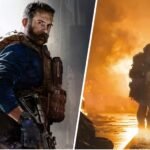Introduction to AI-Generated Portraits
In recent years, the intersection of artificial intelligence (AI) and visual creativity has unlocked a new frontier: AI-generated portraits. These are hyper-realistic or stylized images of human faces or full-body representations created entirely by AI algorithms. Unlike traditional photography or hand-drawn portraits, AI-generated images are the product of deep learning models, trained on vast datasets of human features, poses, and expressions. One of the standout contributors to this technological advancement is Runhorse AI, a pioneering platform that has redefined how the fashion and styling industry visualizes human models.
The integration of AI-generated portraits into fashion isn’t just a novelty—it’s becoming a necessity. As digital transformation sweeps through every sector, fashion brands, designers, stylists, and content creators are exploring new ways to conceptualize and communicate visual ideas. AI-generated portraits offer unprecedented flexibility, cost-effectiveness, and customization that traditional methods simply can’t match.
The Role of AI in Modern Visual Design
AI’s role in visual content creation has evolved rapidly. Generative Adversarial Networks (GANs), neural networks designed to learn and mimic patterns in visual data, serve as the backbone for most AI-generated portrait systems. These algorithms can create lifelike faces with intricate details like skin texture, facial expressions, makeup styles, and even clothing accessories.
Runhorse AI uses a proprietary blend of machine learning and style transfer techniques to create stunning, photorealistic portraits. What sets it apart is the level of detail and artistic control it offers. Designers can tweak facial features, choose mood-specific lighting, apply fashion-forward aesthetics, and adapt styles to different demographics, making it a versatile tool for global brands.
Transforming Fashion Campaigns and Branding
Traditionally, fashion campaigns rely heavily on human models, photographers, stylists, and elaborate production setups. While this has been effective, it’s also expensive and logistically demanding. AI-generated portraits change the game by offering scalable, on-demand models tailored to specific campaign needs.
Fashion brands are now able to conceptualize and launch entire marketing campaigns without organizing a single photoshoot. For instance, Runhorse AI enables the creation of diverse models that reflect inclusivity across race, age, body type, and gender expression. This democratization of beauty allows smaller brands to compete with industry giants by accessing high-quality visual assets at a fraction of the cost.
Moreover, with the ability to instantly adjust styling elements—like makeup, clothing, or hairstyle—brands can A/B test different versions of the same campaign to see what resonates most with their audience. This agility is invaluable in a fast-paced, trend-driven industry.
Styling and Virtual Try-Ons
Another revolutionary application of AI-generated portraits in fashion lies in virtual styling and try-ons. Customers can now see how garments will look on digitally created models that closely match their own body type and appearance. This shift enhances the personalization of the shopping experience, improving customer satisfaction and reducing return rates.
Runhorse AI excels in creating avatars that are indistinguishable from real people. These avatars can be dressed in 3D-modeled outfits or superimposed with actual fashion pieces, offering retailers an engaging way to showcase their collections. Integrating these AI-generated portraits into e-commerce platforms is already helping brands reduce their dependency on seasonal photoshoots and physical inventory models.
Diversity and Representation
One of the persistent criticisms of the fashion industry has been its lack of representation. AI-generated portraits offer an immediate remedy by allowing for full control over race, ethnicity, body type, and even unique features like birthmarks, disabilities, or cultural fashion expressions.
With platforms like Runhorse AI, brands can ensure their visual content speaks to a broader, more inclusive audience. This is not just ethically responsible—it also makes business sense. Consumers are increasingly drawn to brands that mirror their identity and values. AI-generated portraits help create an inclusive visual language that celebrates individuality and diversity.
Reducing Environmental Impact
Fashion is one of the most resource-intensive industries. From travel to materials used in traditional photoshoots, the environmental cost is significant. By replacing physical modeling and photography with AI-generated images, brands can significantly cut down on waste and carbon emissions.
Virtual models generated by Runhorse AI don’t require transportation, clothing samples, lighting setups, or physical space. They don’t consume natural resources, yet they provide high-quality, lifelike visuals that serve the same purpose. This eco-friendly alternative aligns with the growing demand for sustainable practices in fashion.
Ethical Considerations and Authenticity
While the benefits are clear, the rise of AI-generated portraits also brings ethical questions. Concerns about consent, realism, and misrepresentation are valid and need to be addressed with transparency and regulation. Runhorse AI has taken steps to ensure that all generated images are marked and categorized as synthetic, avoiding confusion with real individuals.
Furthermore, the use of AI in fashion should complement—not completely replace—human creativity. The goal is not to eliminate photographers, models, or stylists but to give them a powerful tool that expands creative possibilities. When used ethically, AI-generated portraits can coexist with traditional methods to enrich the visual storytelling process.
Future Trends in Fashion and AI Integration
Looking ahead, the role of AI in fashion will only grow. We can expect further advancements in real-time portrait generation, enhanced realism with micro-expressions, and even integration with augmented reality (AR) and virtual reality (VR) environments. Fashion shows may soon feature fully AI-generated models walking digital runways, accessible to global audiences without geographical or logistical barriers.
Runhorse AI is already experimenting with dynamic modeling—AI avatars that move, speak, and interact in real-time environments. This technology can be used for live shopping experiences, customer service, and even influencer marketing campaigns powered entirely by digital personas.
Additionally, with the increasing popularity of the metaverse and digital fashion, AI-generated portraits will be essential in creating avatars, styling characters, and establishing personal brand identities in virtual spaces.
Conclusion: A New Era in Fashion Visuals
AI-generated portraits are not just a passing trend; they are a transformative force reshaping the fashion and styling industry. Platforms like Runhorse AI offer unprecedented creative freedom, operational efficiency, and ethical representation. From improving campaign diversity to enhancing virtual shopping experiences, the applications are vast and impactful.
As technology continues to evolve, the key lies in striking a balance between innovation and integrity. By embracing AI-generated portraits thoughtfully, the fashion world can lead the charge into a more inclusive, sustainable, and visually dynamic future.
May Also Read: influencergonewild



